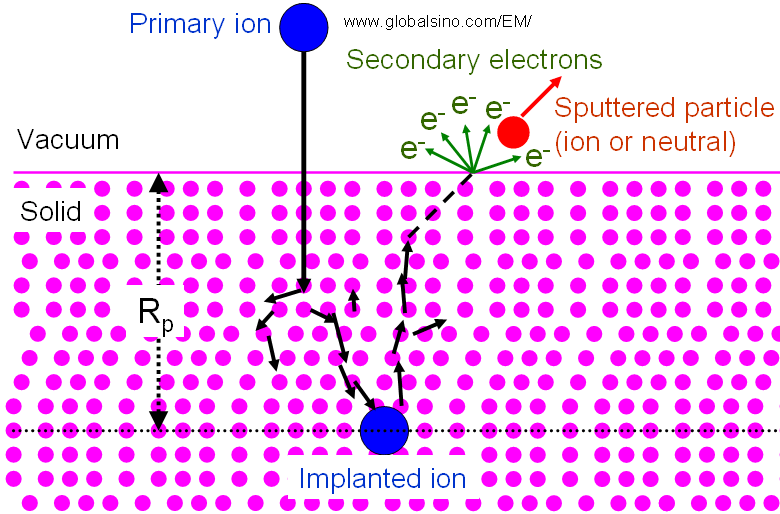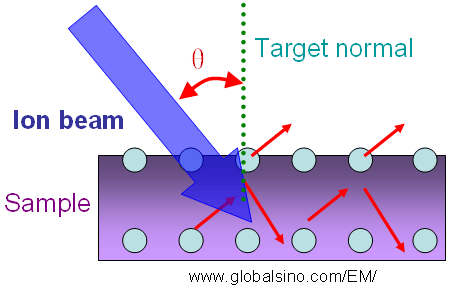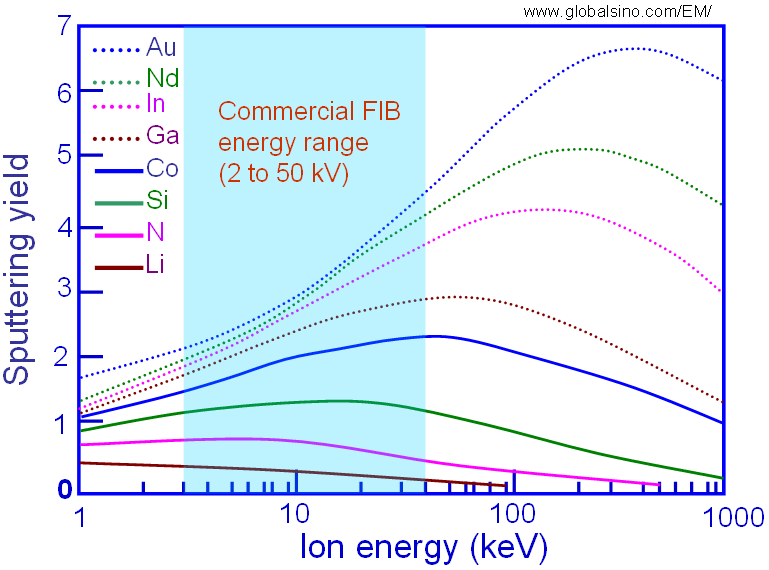=================================================================================
Figure 2452a shows that the possible ion beam - matter interactions induce particle sputtering from a solid surface. Secondary electrons may be also a product of the interactions. The ion will eventually come to rest and be implanted within the target at some depth below the sample surface if the ion is not backscattered out of the target surface. Note that the response of a given target material to the ion beam depends strongly on many factors such as beam current, incident ion energy, trench/feature geometry, raster pattern, and milling angle.

Figure 2452a. The possible ion beam - matter interactions induce particle sputtering from a solid surface.
For FIB milling, the ionic sputtering yields of most materials strongly vary with the angle (θ) of incidence with respect to the target normal.

Figure 2452b. The angle (θ) of incidence with respect to the target normal.
Figure 2452c shows the dependence of ionic sputtering yields on ion energies. The incident ions (Au, Nd, In, Ga, Co, Si, N, and Li) are normal to the silicon (Si) target surface.

Figure 2452c. The dependence of ionic sputtering yields on ion energies. The target material is silicon.
|